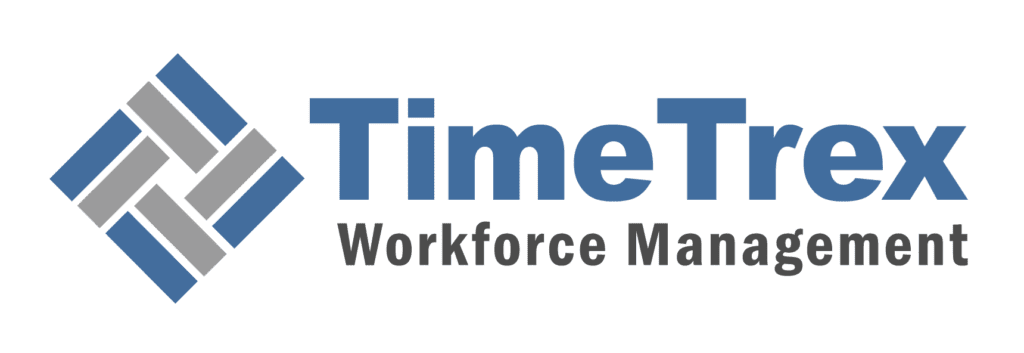
New US 35% Tariff on Canada(?)
In a dramatic escalation of the 2025 North American trade conflict, the United States administration announced its intention to impose a 35% tariff on a broad range of Canadian imports, effective August 1, 2025. This new U.S. tariff on Canada represents a significant increase from previous duties and threatens to destabilize the vital U.S.-Mexico-Canada (USMCA) trade relationship. This article provides an exhaustive analysis of the new 35% U.S. tariff on Canada, its context, its justifications, its projected economic consequences, and its profound implications for the future of the U.S.-Canada alliance, a topic of critical importance for both US and Canadian citizens.
TL;DR
The U.S. announced a new 35% tariff on Canadian imports starting August 1, 2025, a major escalation in the ongoing trade conflict. The administration's justifications, primarily citing Canada's alleged failure to curb fentanyl trafficking, are not supported by data. The economic impact is projected to be severe for both nations, with a significant drag on U.S. GDP and job losses, but disproportionately devastating for Canada. This action challenges the integrity of the USMCA, forcing Canada to pursue legal action and accelerate economic diversification away from the U.S. The conflict undermines North American competitiveness and casts a shadow over the future of continental trade.
Article Index
- Anatomy of a Trade War - The 2025 U.S. Tariff Offensive
- Deconstructing the Justification - Rhetoric vs. Reality
- Macroeconomic Shockwaves - A Comparative Impact Analysis
- Sectoral Battlegrounds - Dissecting the Industrial Fallout
- The USMCA Under Siege - Legal Challenges and Dispute Resolution
- Ottawa's Response - Retaliation, Diplomacy, and Diversification
- The Geopolitical Endgame - Long-Term Consequences and Strategic Recommendations
Anatomy of a Trade War - The 2025 U.S. Tariff Offensive
To comprehend the strategic implications of the 35% U.S. tariff on Canada, it is essential to first establish a factual baseline of the policy announcement and place it within the turbulent context of the U.S. administration's broader 2025 trade offensive. The actions taken against Canada are not an isolated incident but rather a key component of a global campaign to fundamentally reshape U.S. trade relationships through coercive economic pressure.
The August 1st Proclamation
On Thursday, July 11, 2025, U.S. President Donald Trump formally announced a plan to significantly increase tariffs on Canadian imports. The core of the proclamation is the imposition of a 35% ad valorem tariff on Canadian products entering the United States, scheduled to take effect on August 1, 2025. This represents a substantial escalation from the 25% rate applied since March 2025. The letter specified that this new 35% levy is "separate from all sectoral tariffs," signaling it is a broad-based duty intended to be layered on top of other existing import taxes.
Contextualizing the Conflict: A Global Tariff Barrage
The heightened tariff against Canada is a central element of the Trump administration's aggressive "reciprocal tariff" policy. This global campaign has targeted key U.S. allies and trading partners alike, with Brazil facing a 50% tariff, and Japan and South Korea facing 25% tariffs. This policy runs in parallel with steep duties on specific industrial sectors justified under national security provisions, including a 50% tariff on foreign steel and aluminum and a 25% tariff on imported automobiles.
A Timeline of Escalation (2025)
| Date | Action | Details & Justification |
|---|---|---|
| February 1 | U.S. imposes 25% tariffs on Canada/Mexico | Cited IEEPA for national security (fentanyl smuggling). |
| March 4 | Tariffs take effect; Canada retaliates | Canada implements 25% retaliatory tariffs on C$30 billion of U.S. imports. |
| March 6-7 | U.S. suspends tariffs for USMCA-compliant goods | Scope and permanence of the exemption remain ambiguous. |
| April 3 | U.S. imposes 25% tariff on autos/parts | Imposed under Section 232, targeting a critical integrated sector. |
| June 4 | Steel & aluminum tariffs doubled to 50% | Intensified pressure on Canadian metals producers. |
| July 11 | U.S. announces new 35% tariff on Canada | Effective August 1, citing Canadian retaliation and the fentanyl issue. |
Deconstructing the Justification - Rhetoric vs. Reality
The U.S. administration has presented several justifications for its decision to impose a 35% tariff on Canadian imports. A critical analysis reveals that the stated rationales often serve as pretexts for achieving underlying economic and political objectives.
The Fentanyl Pretext
The most prominent justification is Canada's alleged role in the U.S. fentanyl crisis. However, this claim is starkly contradicted by U.S. Customs and Border Protection (CBP) data, which shows that seizures at the northern border accounted for just 0.2% of total fentanyl confiscated in 2024. The overwhelming majority enters via the southern border. Framing the issue as a national security threat allowed the administration to invoke the International Emergency Economic Powers Act (IEEPA), bypassing traditional trade law.
Retaliation and Reciprocity
The second pillar of the U.S. justification is that the tariff escalation is a direct response to Canadian retaliation. From Ottawa's perspective, its countermeasures are a justified and proportional response to the initial, unilateral tariffs imposed by the United States. The U.S. has also leveraged long-standing trade irritants, like Canada's dairy supply management system, to bolster its case.
Macroeconomic Shockwaves - A Comparative Impact Analysis
The imposition of a 35% U.S. tariff on Canada represents a significant macroeconomic shock. The data reveals a scenario of mutual economic harm, with Canada bearing a disproportionately severe burden.
| Key Economic Indicator | United States (Projection) | Canada (Projection) | Source of Projection |
|---|---|---|---|
| Real GDP Impact | -0.8 pp in 2025; -0.4% long-run | -2% to -3% of GDP | Yale Budget Lab, Brookings, Bank of Canada |
| Employment Impact | -578,000 jobs | -278,000 to -510,000 jobs | Yale Budget Lab, Brookings |
| Consumer Price Impact | +1.9% price level; +$2,500/household | Temporary inflation jump from retaliation | Yale Budget Lab, Bank of Canada |
| Wage Impact | -0.2% to -0.5% | -2.6% to -4.9% | Brookings |
| Export Impact | -6% to -9% (to Canada/Mexico) | -9% to -19% (to U.S.) | Brookings |
Sectoral Battlegrounds - Dissecting the Industrial Fallout
The full impact of the tariff war is best understood by examining its effects on specific industries that form the backbone of the U.S.-Canada trade relationship.
The Automotive Artery: Ground Zero for Disruption
The North American automotive industry is exceptionally vulnerable. The sector faces a multi-pronged assault: a 25% tariff on cars and parts, a 50% tariff on steel and aluminum, and now the new 35% U.S. tariff on Canada for non-USMCA compliant goods. This could add approximately $6,600 to the price of an average new car sold in the U.S.
Energy and Resources: Differentiated Damage
The U.S. administration's strategy shows calculated differentiation. Recognizing U.S. dependence on Canadian energy, tariffs on these imports are lower, at 10%. In stark contrast, metals face punitive tariffs, with duties on Canadian steel and aluminum at 50%.
The USMCA Under Siege - Legal Challenges and Dispute Resolution
The U.S. tariff offensive raises profound legal questions regarding its compatibility with the United States-Mexico-Canada Agreement (USMCA). This conflict is the first major stress test of the USMCA's legal framework.
The Critical USMCA Exemption Question
A central point of ambiguity is whether the new 35% tariff will apply to goods certified as originating in North America under USMCA rules. The official announcement did not clarify this, creating enormous uncertainty. If the exemption is not honored, it would effectively nullify the core benefit of the USMCA for a vast portion of North American commerce.
Invoking Chapter 31: Canada's Legal Recourse
In response, Canada has turned to the formal legal channels established within the USMCA. The Canadian government has initiated dispute settlement proceedings under Chapter 31 for the key U.S. tariff actions. The outcome of these disputes will determine whether the USMCA's rules-based system can constrain a member state determined to act unilaterally.
Ottawa's Response - Retaliation, Diplomacy, and Diversification
Faced with this trade assault, the Canadian government has deployed a multi-faceted strategy combining calibrated retaliation, persistent diplomatic engagement, and a long-term push for economic diversification.
| U.S. Tariff Action | Stated U.S. Rate | Canadian Retaliatory Action | Stated Canadian Rate | Affected U.S. Sectors/Products |
|---|---|---|---|---|
| IEEPA "Fentanyl" Tariffs (March 4) | 25% (10% on energy) | Surtax on U.S. Imports | 25% | Orange juice, peanut butter, wine, spirits, motorcycles |
| Section 232 Steel & Aluminum (Doubled June 4) | 50% | Reciprocal Surtax | 25% | U.S. steel, aluminum, tools, computers |
| Section 232 Autos (April 3) | 25% | Reciprocal Surtax | 25% | Non-USMCA compliant vehicles |
| 35% Escalation (Announced for Aug 1) | 35% | Vowed defense; potential further retaliation | TBD | TBD |
The Geopolitical Endgame - Long-Term Consequences and Strategic Recommendations
The 2025 U.S.-Canada trade war transcends a typical commercial dispute. It represents a fundamental challenge to the bilateral relationship, with potentially lasting geopolitical consequences.
The Erosion of a Foundational Alliance
The conflict is inflicting damage that extends far beyond economic metrics, eroding the deep-seated trust that has been the bedrock of the U.S.-Canada alliance. This forces Canada to re-evaluate its core foreign policy assumption that the United States is a predictable and reliable partner.
The Future of North American Competitiveness
The internecine trade war directly undermines the shared strategic objective of building a resilient and competitive North American economic bloc. It cedes strategic ground to rivals like China and weakens U.S. credibility globally. The upcoming 2026 statutory review of the USMCA has now become a critical inflection point for the very survival of the agreement.
Calculate the Impact on Your Business
The new 35% U.S. tariff on Canada will have complex and far-reaching effects. Understand how these changes will impact your cross-border operations and bottom line.
Use Our U.S. Tariff CalculatorDisclaimer: The content provided on this webpage is for informational purposes only and is not intended to be a substitute for professional advice. While we strive to ensure the accuracy and timeliness of the information presented here, the details may change over time or vary in different jurisdictions. Therefore, we do not guarantee the completeness, reliability, or absolute accuracy of this information. The information on this page should not be used as a basis for making legal, financial, or any other key decisions. We strongly advise consulting with a qualified professional or expert in the relevant field for specific advice, guidance, or services. By using this webpage, you acknowledge that the information is offered “as is” and that we are not liable for any errors, omissions, or inaccuracies in the content, nor for any actions taken based on the information provided. We shall not be held liable for any direct, indirect, incidental, consequential, or punitive damages arising out of your access to, use of, or reliance on any content on this page.
About The Author

Roger Wood
With a Baccalaureate of Science and advanced studies in business, Roger has successfully managed businesses across five continents. His extensive global experience and strategic insights contribute significantly to the success of TimeTrex. His expertise and dedication ensure we deliver top-notch solutions to our clients around the world.
Time To Clock-In
Start your 30-day free trial!
Experience the Ultimate Workforce Solution and Revolutionize Your Business Today
- Eliminate Errors
- Simple & Easy To Use
- Real-time Reporting

Saving businesses time and money through better workforce management since 2003.
Copyright © 2025 TimeTrex. All Rights Reserved.
